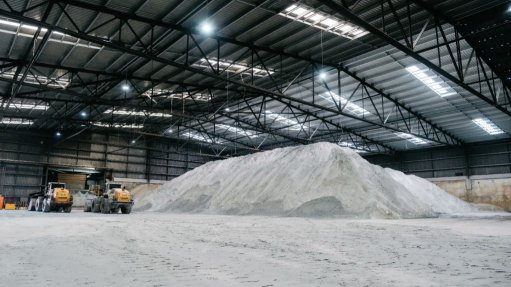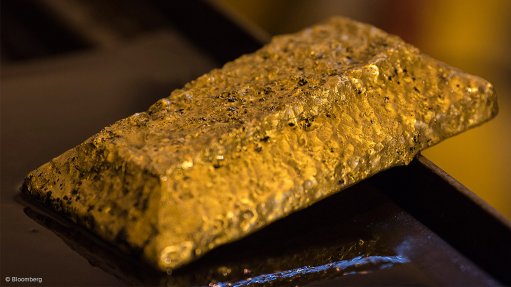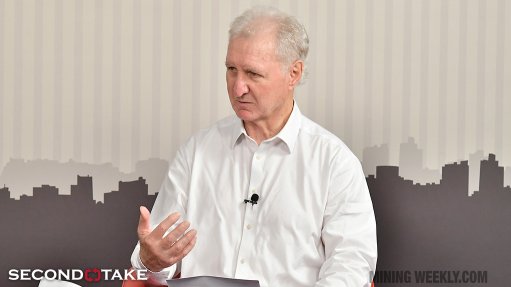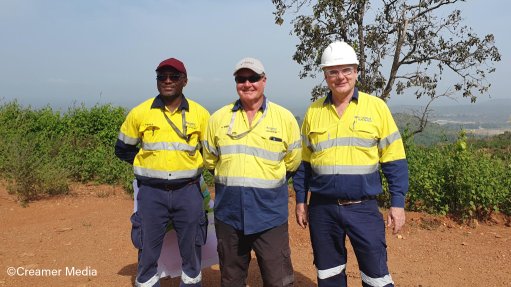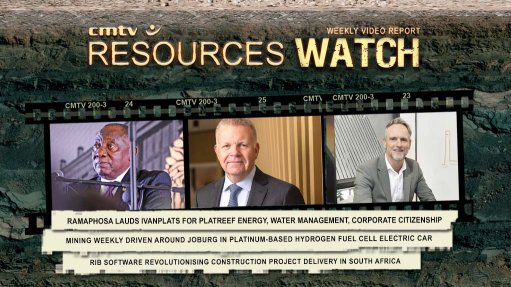Green 175 MW power for Sibanye-Stillwater platinum group metal mines

A total of 174 MW of clean, green renewable power is on the way for Sibanye-Stillwater’s platinum group metal (PGM) mines in South Africa.
JOHANNESBURG (miningweekly.com) – A total of 174 MW of clean, green renewable power is on the way for Sibanye-Stillwater’s platinum group metal (PGM) mines in South Africa.
The total cost of the three project scheme will be in the order of R2.5-billion to R2.8-billion.
They will be funded through third-party power price agreement arrangements, Sibanye-Stillwater energy and decarbonisation head Jevon Martin said.
Speaking on value creation through sustainability at a PGMs webinar covered by Mining Weekly, Martin said that this would result in the Johannesburg- and New York-listed company having minimum capital outlay to access renewable energy at a 30% to 50% discount to grid power “from day one”.
This would generate a significant net present value for these operations plus significant decarbonisation. It would also offset the liabilities of anticipated pending Scope 2 carbon taxes.
“We are currently targeting financial close in the first half of 2023 and commercial operation in early 2025,” said Martin.
The project schedule is currently being driven by permitting processes, of which the environmental impact assessment, the rezoning and the subdivision of land had already been initiated, he added.
Sibanye-Stillwater’s South African PGM operations account for 310 MW, or 39%, of the group’s energy demand.
Owing to the infrastructure and extensive conventional mining methods, electricity is the predominant form of energy and, as a result, 97% of the emissions stem from Eskom coal-fired and other diesel-fired electricity.
It is anticipated that this emission profile will decline over time, in line with Sibanye-Stillwater’s PGMs production profile, as well as when the renewable energy mix increases in the national electricity grid.
However, a number of active decarbonisation measures are currently under way ahead of that amelioration.
Similar to Sibanye-Stillwater’s gold operations, the PGM operations have advanced energy management practices, which last year resulted in 60 000 t of greenhouse gas emissions being avoided, primarily through the deployment of digital twin simulations as well as the development of an energy culture.
Owing to the emissions profile, one of the strongest levers that the company can pull is the deployment of renewable energy, with three upcoming solar photovoltaic (PV) projects and wind energy projects with allocated wheeling poised to enable rapid decarbonisation of these particular operations.
The use of battery electric vehicles is also being looked into to replace the diesel-driven vehicles used in the mechanised operations.
Scope 3 targets are also being set for those emissions that occur through the third-party processing of the company’s concentrate, where electricity will continue to remain the focus of this operation owing to its emissions predominance.
Given the company’s expanded footprint in North West province, it first undertook initial prefeasibility studies and then later a feasibility study into embedded solar PV power generation directly into the operations.
The studies confirmed the strong rationale around deploying these projects given their decarbonisation and commercial potential.
These long-life assets, as well as the associated demand, could easily support up to 175 MW of solar PV across the three specific sites. Proposed are:
- an 80 MW PV project located within the Rustenburg Platinum Mines complex, specifically between the Bathopele mine and the upper group two (UG2) concentrator;
- a 65 MW PV project colocated within the Karee complex to supply the K4 shaft, the K3 shaft as well as the K3 concentrator; and
- a 30 MW PV project on the eastern portion of the footprint to inject power directly into the Roland smelter.
The assessment included an extensive land study that confirmed the land availability to accommodate the solar PV, with no critical engineering, environmental, geotechnical, regulatory, social or security flaws.
“We also confirmed that we have adequate substations that will allow the solar PV projects to be directly interconnected into our operations,” said Martin.
Article Enquiry
Email Article
Save Article
Feedback
To advertise email advertising@creamermedia.co.za or click here
Press Office
Announcements
What's On
Subscribe to improve your user experience...
Option 1 (equivalent of R125 a month):
Receive a weekly copy of Creamer Media's Engineering News & Mining Weekly magazine
(print copy for those in South Africa and e-magazine for those outside of South Africa)
Receive daily email newsletters
Access to full search results
Access archive of magazine back copies
Access to Projects in Progress
Access to ONE Research Report of your choice in PDF format
Option 2 (equivalent of R375 a month):
All benefits from Option 1
PLUS
Access to Creamer Media's Research Channel Africa for ALL Research Reports, in PDF format, on various industrial and mining sectors
including Electricity; Water; Energy Transition; Hydrogen; Roads, Rail and Ports; Coal; Gold; Platinum; Battery Metals; etc.
Already a subscriber?
Forgotten your password?
Receive weekly copy of Creamer Media's Engineering News & Mining Weekly magazine (print copy for those in South Africa and e-magazine for those outside of South Africa)
➕
Recieve daily email newsletters
➕
Access to full search results
➕
Access archive of magazine back copies
➕
Access to Projects in Progress
➕
Access to ONE Research Report of your choice in PDF format
RESEARCH CHANNEL AFRICA
R4500 (equivalent of R375 a month)
SUBSCRIBEAll benefits from Option 1
➕
Access to Creamer Media's Research Channel Africa for ALL Research Reports on various industrial and mining sectors, in PDF format, including on:
Electricity
➕
Water
➕
Energy Transition
➕
Hydrogen
➕
Roads, Rail and Ports
➕
Coal
➕
Gold
➕
Platinum
➕
Battery Metals
➕
etc.
Receive all benefits from Option 1 or Option 2 delivered to numerous people at your company
➕
Multiple User names and Passwords for simultaneous log-ins
➕
Intranet integration access to all in your organisation







